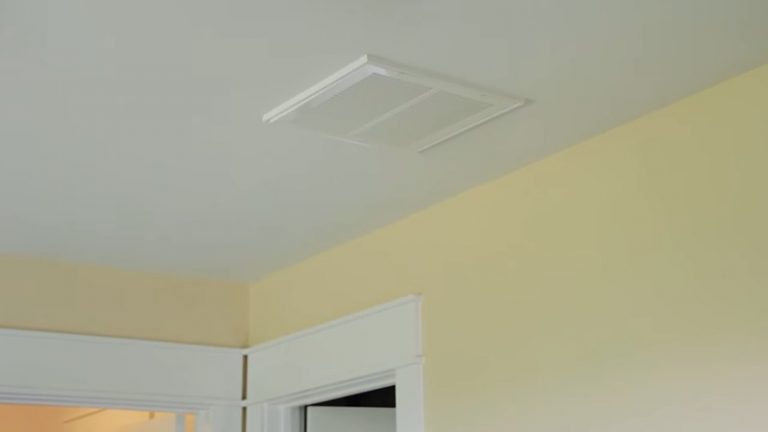How to Hang a Pegboard Without Wall Damage: Ultimate Guide
Pegboards are a fantastic organization solution, but the thought of drilling holes can be a major roadblock. Whether you’re a renter, live in a dorm, or simply want to avoid permanent changes, you need ways to hang a pegboard without leaving a trace.
Many people struggle with traditional mounting methods that require drills, anchors, and creating holes in the drywall. This guide explores multiple effective techniques to get your pegboard up and your space organized, all while keeping your walls pristine.
You'll Learn About
The Core Problem: Why Traditional Mounting Fails Many
The standard way to hang a pegboard involves creating a small gap between the board and the wall. This space is essential for the hooks and accessories to fit properly. Typically, this is achieved by screwing furring strips or spacers into wall studs.
This method, while sturdy, presents significant challenges. It requires tools many people don’t own, creates permanent holes, and is often forbidden in rental agreements. For those who frequently redecorate, patching and painting becomes a repetitive chore.
Understanding the Need for a Gap
Every pegboard, regardless of how it’s mounted, needs a “standoff” space of about half an inch behind it. Without this gap, the hooks have nowhere to go, rendering the pegboard useless. Any damage-free solution must account for this critical requirement.
Finding a method that provides this necessary space without drilling is the key to a successful and damage-free installation. Fortunately, several innovative solutions meet this need.
Solution 1: Heavy-Duty Adhesive Strips and Hooks
For lighter applications, high-quality adhesive strips are an excellent choice. Brands like Command offer a variety of products, including picture hanging strips and larger hooks, that can securely hold a pegboard without drilling. This method is ideal for smaller pegboards used for craft supplies, office items, or kitchen utensils.
Success with adhesive strips depends heavily on proper preparation and execution. It’s not as simple as just sticking them on the wall. Following the manufacturer’s instructions to the letter is crucial for a strong, lasting bond.
Step-by-Step Guide to Using Adhesive Strips
First, clean the wall surface thoroughly with rubbing alcohol to remove any dust or oils. This ensures the adhesive can form a strong bond. Next, plan the placement of your strips on the back of the pegboard. For an even hold, place them in each corner and consider adding more in the middle for larger boards.
Attach the strips to the pegboard, then press the board firmly against the wall for at least 30 seconds. To reinforce the bond, some methods suggest gently removing the pegboard, leaving the strips on the wall, and pressing each strip firmly for another 30 seconds before reattaching the board after an hour.
Weight Considerations and Best Practices
Always check the weight capacity of the adhesive strips you choose. It’s wise to use more strips than you think you need to distribute the weight evenly. Remember that the total weight includes the pegboard itself plus everything you plan to hang on it.
Avoid placing heavy or valuable items on a pegboard hung with only adhesive strips. This method is best suited for lightweight organization where the risk of overloading is minimal.
Solution 2: Freestanding Pegboard Systems
If you need to store heavier items or want a more robust solution, a freestanding pegboard is the perfect answer. These systems stand on their own and don’t require any attachment to the wall, completely eliminating the risk of damage. They are modular and often designed to sit behind a desk or workbench.
Brands like KOKOPEGBOARD offer floor-based metal systems that assemble in minutes without any tools. These are particularly popular in gaming setups, home offices, and for renters who need a serious storage solution without altering the walls.

Benefits of a Freestanding System
The most significant advantage is the complete absence of wall contact and potential damage. They are also incredibly sturdy, with some metal systems capable of supporting over 180kg. Their modular nature allows for easy customization with shelves, hooks, and baskets.
Another benefit is portability. If you move or decide to rearrange your room, you can easily disassemble and move the entire system without leaving a single mark on the wall. This flexibility is invaluable for those who like to change their space often.
Solution 3: Creative and Unconventional Methods
Thinking outside the box can lead to some truly innovative and damage-free pegboard solutions. These methods often involve repurposing other items or using existing structures in your room to support the pegboard.
These creative approaches can add a unique decorative element to your space while providing the organizational benefits of a pegboard. They are perfect for those who enjoy a bit of DIY and want a personalized touch.
Leaning Pegboard with Support
A large, framed pegboard can simply be leaned against a wall. To ensure stability and create the necessary gap for hooks, attach small wooden blocks or rubber feet to the back edges. This is a simple, effective, and stylish way to add pegboard storage without any permanent fixtures.
This method works best with heavier, more substantial pegboards that are less likely to tip over. Placing it behind a desk or another piece of furniture can provide additional security.
Pegboard Room Dividers
For a truly functional and stylish solution, consider building or buying a pegboard room divider. These are freestanding structures, often made of multiple panels connected by hinges, that can be used to partition a room while offering double-sided storage.
DIY versions can be constructed from plywood sheets, allowing you to customize the size and hole spacing. This approach not only solves your storage problem but also adds a significant architectural element to your room.
Hanging from Existing Structures
If you have an unfinished basement or a room with exposed ceiling joists, you can hang your pegboard without touching the walls. Attach vertical wooden boards to the floor joists, running them down to your desired height. Then, you can simply nail or screw the pegboard directly onto these boards.
This method is particularly useful for workshops or utility areas where the aesthetics of exposed joists are acceptable. It provides a very sturdy mounting surface away from potentially problematic cinder block or concrete walls.
Comparing Damage-Free Hanging Methods
Choosing the right method depends on your specific needs, including the weight of the items you want to store and the type of wall you have. Each solution offers a different balance of strength, cost, and ease of installation.
Understanding these differences will help you make an informed decision and select the perfect damage-free solution for your space.
| Method | Best For | Weight Capacity | Pros | Cons |
|---|---|---|---|---|
| Adhesive Strips | Lightweight items, small boards, smooth surfaces | Low to Medium | Inexpensive, easy to install, completely removable | Not suitable for heavy items, requires careful surface prep |
| Freestanding Systems | Heavy tools, large collections, renters | Very High | No wall contact, extremely sturdy, portable, modular | Higher initial cost, takes up floor space |
| Leaning Pegboard | Decorative displays, medium-weight items | Medium | No installation required, stylish, easy to move | Can be less stable, requires a heavy/sturdy board |
| Room Dividers | Large spaces, dual-sided storage needs | High | Highly functional, creates zones, decorative | Can be a larger DIY project, takes up significant space |
| Hanging from Joists | Basements, workshops, unfinished spaces | High | Very sturdy, avoids difficult wall materials | Only works in specific environments with exposed joists |
Final Considerations for a Damage-Free Installation
Before you begin, always assess your wall’s condition and the total weight you plan to hang. If your home experiences fluctuating temperatures or humidity, this could affect adhesive performance. You might notice steam coming out of your furnace in winter, which indicates changes in indoor air that could impact your setup.
It’s also important to consider long-term needs. If you think you’ll need to store heavier items in the future, investing in a freestanding system from the start might be more cost-effective. Sometimes, a larger home project is unavoidable, like when you discover you forgot to disconnect your garden hose in winter, leading to bigger repairs. Planning ahead with your storage can prevent similar frustrations.
Ultimately, hanging a pegboard without damaging your walls is entirely achievable. By choosing the right method for your needs—whether it’s the simplicity of adhesive strips or the robust strength of a freestanding system—you can create a perfectly organized space without leaving a single hole behind. For homeowners considering future upgrades, understanding the cost to upgrade to 200 amp service can also be a part of long-term planning for a more functional home workshop.


